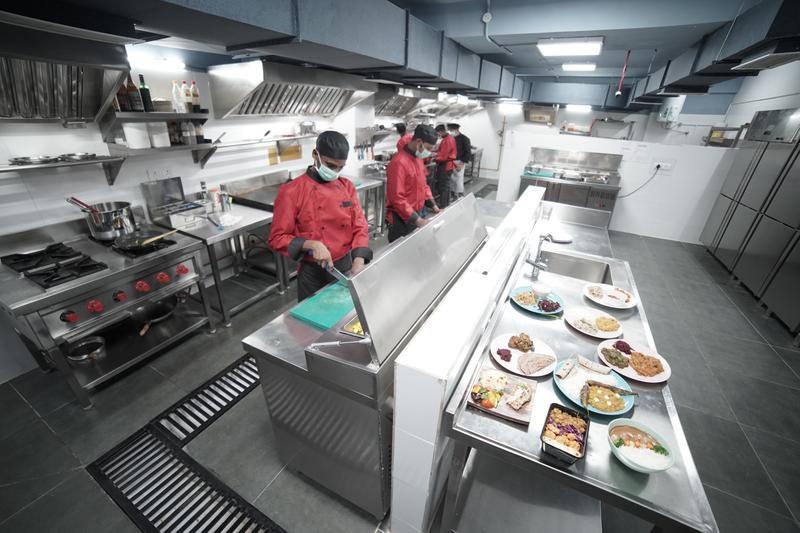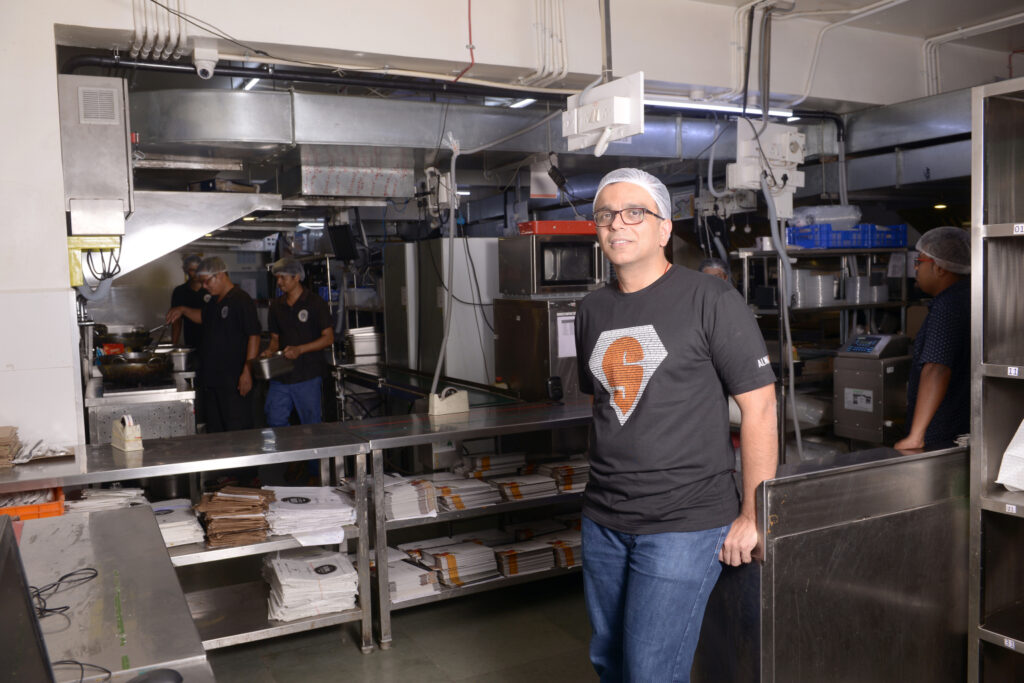If our ancestors who were heavily involved in farming activities believed that food came from the heavens in the past, well now food comes from the ‘clouds’. Pun intended cloud kitchens are all the rage. This is one area where all major and minor players in the foodservice industry are placing their bets on. According to RedSeer Management Consulting, cloud kitchens are projected to become a $2 billion industry in India by 2023-24, and the number of cloud kitchens in India is expected to grow by 50-60% as compared to the overall foodservice industry which is expected to grow by 10% in the next 5 years.
Cloud Kitchens are the future of modern kitchens in India and most likely to dominate the food tech space. Here’s seeing them in a nutshell and their rising popularity in India:
Cloud kitchens by definition are commercial kitchen set-ups where food is prepared for delivery and take-outs only. They have no physical space to cater to dine-in requests. They allow multiple food business to carry out their food preparation operations from a single place. Cloud kitchens are also known as ‘dark kitchens’, ‘ghost kitchens’, and ‘virtual kitchens’. Their popularity is directly proportional to people’s eating preferences.

Image Credits: Smergers
Even before the COVID-19 pandemic hit us and disrupted lives, there was a slow and steady preference for delivery and take-outs. People would prefer to Netflix and chill with takeout food in the comfort of their homes, rather than spend time in a restaurant. Today, in a post-Covid world, people would prefer eating ‘restaurant-like’ food at home due to a psychological fear of catching infections while eating out. For newbies starting in the foodservice industry, cloud kitchens present an opportunity. They are low on investment (in comparison to setting up a restaurant), low on overheads, and high on returns, also giving room for experimentation and scaling. Also, cloud kitchens can reach a wider audience throughout the city as compared to a traditional restaurant.
Step 1: Location
Location plays a key role in the setting up of a cloud kitchen. It’s important to select a location based on customer demographics and the type of food being prepared in the kitchen. When it comes to the nitty-gritty of the kitchen planning process, proper sanitation and water supply are important even if rentals are low. Ideally, a cloud kitchen is a success when it is located in a place where there is a high demand for the food being prepared in that particular kitchen.
Step 2: Technology to accept orders
After location, tech is the next big hurdle to cross. This is because the success of a cloud kitchen relies solely on its online presence. One way is to collaborate with existing giants such as Swiggy, Zomato, Foodpanda, who have the reach. They do end up taking a certain percentage (roughly 18-30%) of revenue per order. The other way is to build your online presence by creating a well-optimized website and integrating POS software which helps increase efficiency and managing customers.
Step 3: Licenses to acquire for the kitchen
Licensing is a non-negotiable element for setting up and running the operations in a cloud kitchen. Common licenses include FSSAI license, GST number, Municipal health trade license, fire license, etc. Hiring a food consultancy to help out with licenses is a recommended measure to take.
Step 4: Setting up the kitchen
Setting up the kitchen, aka Commercial Kitchen Planning and design is a major step for a cloud kitchen. The clarity in terms of what cuisine and food the kitchen is willing to offer will help decide what appliances, equipment, shelves, cooking ranges, tables, who be required for the kitchen. Planning for a cloud kitchen that serves basic foods such as burgers, sandwiches, pizzas is easy and low on investment. Costs usually go up when heavy equipment like chimneys, deep refrigerators, and burners need to be installed, to prepare specialized cuisine. Another important aspect to consider is the packaging. A special budget needs to be allocated for packaging. Since, cloud kitchens do not offer the physical guest experience, investing in sturdy and high-quality packaging can help make a great first impression. Packaging must contain the logo, them, and the concept of the cloud kitchen.
Step 5: Hiring & Selection of Staff Uniform
Right from the chef to the kitchen staff, hiring the right people will make the cloud kitchen a success. In a virtual kitchen, hiring a minimum of 5 people is required to run the operations smoothly. These include chef, helper, housekeeper, delivery person, and salesperson. Uniform is the next important element to consider for the staff as it helps maintain disciple, cleanliness, and hygiene. Essential hygiene and safety standard elements like masks, hair caps, and gloves should also be added to the staff uniforms in a cloud kitchen.
Step 6: POS Tech
Investing in POS tech (Point of Sales system) helps in organize the cloud kitchen business. This helps in keeping track of the number of orders incoming from various online ordering platforms. Tracking of these orders and their detailed reports are essential for the smooth functioning of these food set-ups. It is essential to select a POS tech that is customized as per the specific requirements of the cloud kitchen’s online website and other online delivery platforms.
Step 7: Marketing activities to spread awareness
The last step for a cloud kitchen is advertisement and marketing. Since prime locations and maintenance costs are negligible, food businesses with cloud kitchens must invest in marketing activities. Online marketing works well for cloud kitchens, where social media platforms can be used to spread awareness of exclusive deals and discounts being offered by the cloud kitchen to attract customers. Signing up on platforms such as Zomato, Burrp where customers can leave positive reviews is also an encouraging element.
In conclusion, it is safe to infer that cloud kitchens have an extremely bright future in India due to the rising demand for ‘restaurant-like’ food in the comfort of the home and is here to stay for the foreseeable future.
Examples of successful cloud kitchens in India:
- Swiggy
- Zomato
- Faasos
- Dunzo
- Box8
- Travelkhana

Image Credits: TechCrunch